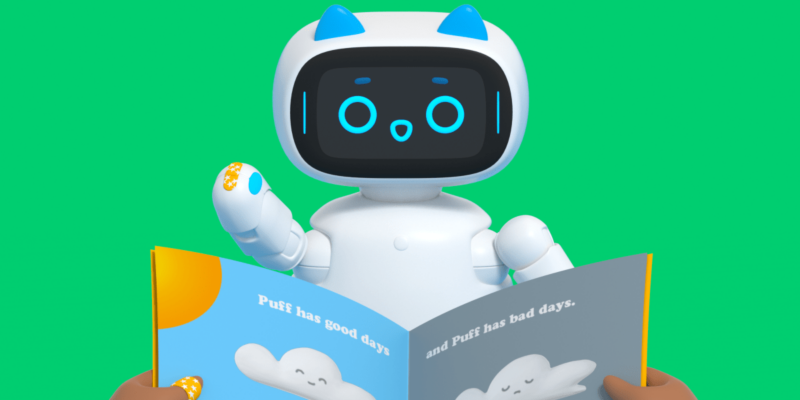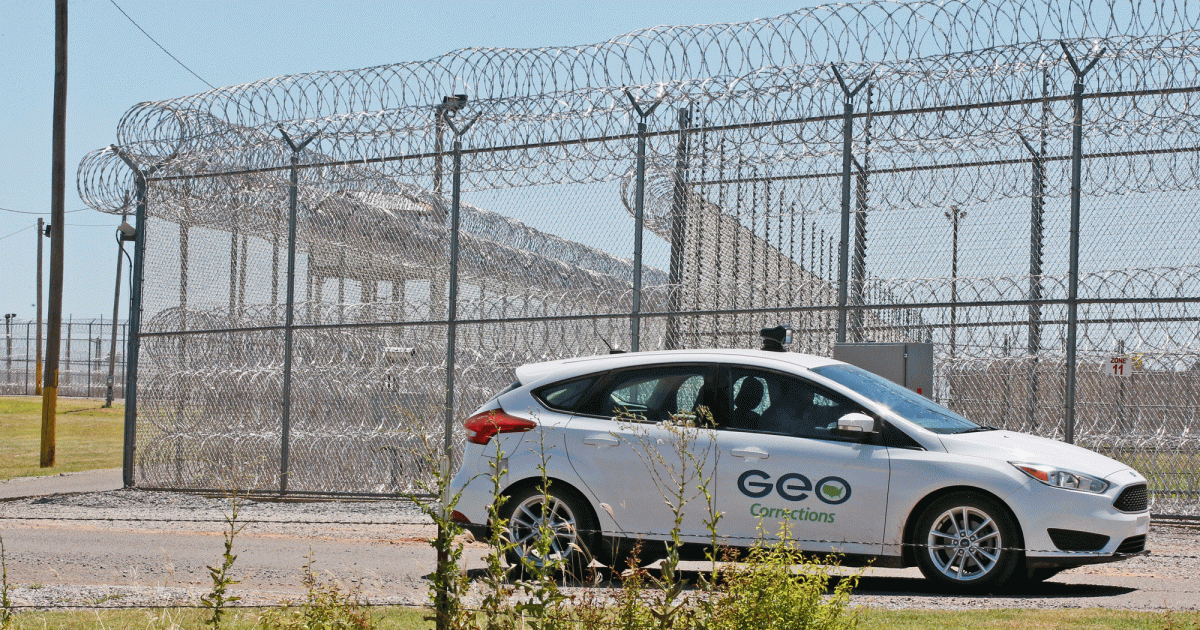
The United States guarantees 7.2 million students with disabilities an equal education. But the system is broken. For this package, we spoke with students, parents, teachers, and advocates about the dire state of—and efforts to fix—programs for students with disabilities. You can read all the stories here.
Zachary did not want to do the crabwalk. Despite encouragement from his parents and his physical therapist, who cheered him on over Zoom, the 5-year-old refused to get on the floor and shuffle from side to side—part of an exercise routine designed to strengthen his coordination. He would rather have been learning about rocket ships or copying David Byrne’s dance moves in Zachary’s favorite movie, Stop Making Sense, or pretending to be a Ghostbuster.
This was not unusual. Diagnosed with autism at age 2, Zachary had trouble focusing on his various online therapy sessions for more than 10 minutes. “There was a real struggle to keep him engaged,” his father, Gary Steinberg, remembers. “We’d have to keep redirecting him back.”
It was December 2020, and Zachary’s public school in the Bronx, which serves children with disabilities, was struggling to support them remotely. Finding it difficult to get kindergarteners to interact over video chat, administrators cut class time to just a couple hours a day. Gary and his wife, Cheryl Nyman, were feeling increasingly desperate. “We weren’t okay,” Cheryl says. “We were in survival mode.”
They worried about Zachary’s social isolation in quarantine, fearing they might miss the critical window for early autism intervention, which leads to better long-term outcomes.
So when Cheryl and Gary saw an Instagram ad for the HomePal Robot-Assisted Instruction system with the Kebbi robot—a little talking humanoid programmed to provide social and emotional support for autistic children—they felt cautious hope.
Amid skyrocketing autism rates, a nationwide shortage of mental health professionals who specialize in autism, and the lingering effects of pandemic isolation, Cheryl and Gary are among a growing number of parents eager to try out robot-assisted therapy or instruction. While the idea of a robot teaching social skills to autistic kids can seem counterintuitive, preliminary research suggests it works, though long-term studies are lacking.
Just 10 years ago, socially assistive robots programmed for autism therapy were used almost exclusively in research trials. Now, robotics and educational-technology companies market about a dozen commercial models to teachers and families of children with disabilities. Priced from $1,000 to $20,000, some are cute and cartoonish, while others might trigger uncanny valley unease. Typically equipped with cameras, microphones, and sensors that gauge human behavior, the robots can be programmed to teach skills ranging from turn-taking to making eye contact to identifying emotions. Most can gesture with movable limbs.
They socialize with varying degrees of complexity: The 1-foot-tall Kebbi, programmed by Connecticut-based company Movia, has a screen for a face, with cheery animated features, while others, such as the toddler-sized Milo, sold by Dallas-based company RoboKind, mimic subtle facial expressions using dozens of “muscles” in an eerily lifelike silicone mask.
For autistic children, who can get overwhelmed by complex social cues, learning communication skills from a robot is a bit like learning to ride a bike with training wheels: Unlike humans, robots are simple, predictable, nonjudgmental, and endlessly patient, which helps children stay calm and engaged. As the kids practice interacting with robots, they often grow more adept at interacting with humans, too.
While the industry is still young, many researchers are hopeful that, as social robots become more affordable and are backed by evidence, they will become mainstream in classrooms and homes for teaching children with disabilities, the way electronic tablets are now largely commonplace.
After reading testimonials about Kebbi, Cheryl and Gary were determined to try it. Priced at $2,388, plus an $85 monthly software licensing fee, “it was a big investment,” says Cheryl. “But I thought, if this is going to help with emotional support during the hardest time in my kid’s life, it’s worth it.”
It took months of petitioning and paperwork, but Cheryl and Gary managed to get full reimbursement from the state. Sporting detachable kitten ears for added cuteness, Kebbi arrived programmed with Movia’s educational software, which featured more than 200 activities, from coin-counting games to toothbrushing tips to “dance parties.” An online training session taught the parents to remote-control the semi-autonomous robot from an accompanying laptop. Movia recommended that Zachary play with Kebbi for 20 minutes a day.
“Our son immediately took to it,” Cheryl says. “It made him happy, it made him laugh, it made him excited. He felt a real interest in learning.” Zachary loved when Kebbi told knock-knock jokes that his parents, unbeknownst to him, typed into the laptop. If he got frustrated, Kebbi’s relaxation exercises could help prevent a meltdown.
His parents noticed that he was staying engaged for longer periods of time. And his physical therapy sessions were no longer such a battle: When Kebbi asked Zachary to do the crabwalk, he tried.
Autism rates in the United States have been rising since researchers began tracking them in 2000. According to the Centers for Disease Control and Prevention, 1 in 36 8-year-olds had received an autism diagnosis as of 2020, up from 1 in 68 in 2010. More than a quarter of diagnosed children have profound autism, characterized by intellectual disability, limited communication ability, or both. Researchers suspect the growing numbers can be partly attributed to increased awareness and screening for the condition, as well as a broadened set of diagnostic criteria.
Rising rates have compounded a shortage of certified providers of Applied Behavioral Analysis, the best-established (but still controversial) therapy for autistic children. While the number of board-certified behavior analysts has surged in recent years, a 2021 study found that more than half of US counties still don’t have a single one. In counties that do have certified analysts, the ratio of autistic children to therapists ranges from fewer than 18 to 328 children per therapist. (The recommended caseload is between six and 15 clients, depending on the treatment model.) Even where therapists are plentiful, costs are often prohibitive: Many children on the spectrum are recommended to have about 20 hours of therapy a week, which can cost $40,000 to $60,000 a year.
While many robots like Kebbi use techniques inspired by ABA, they’re nowhere near advanced enough to serve as replacements for human therapists. They’re not automated babysitters: Robot-assisted interventions require an adult facilitator, whether it’s a parent, teacher, or health professional. “Kebbi wasn’t something where we said, ‘Oh, now we can relax,’” Gary stresses. Nor did they want to pass off their parenting duties to a robot: “You can’t replace a human connection,” Cheryl says. Still, the technology offered them “a little bit of relief and joy,” and they believe it could do the same for parents in similar positions. But issues of affordability, a dearth of long-term studies, and bureaucratic rigidity surrounding curriculums for students with disabilities have left social robots out of reach for most families.
Some researchers estimate that social robots are used in less than 1 percent of classrooms designed for students with disabilities, though no reliable data tracks exact numbers. Since launching in 2010, Movia has sold nearly 300 robots to some 40 schools and 80 families, while its main competitor, RoboKind, founded in 2011, has placed robots in about 400 schools. Some federal and state funding has gone toward robot-assisted instruction: In a 2020 effort to support military families with autistic children, the Department of Defense Education Activity spent $6.4 million placing social robots in military-base schools around the world. In May, Indiana passed a budget that includes $1.35 million to place such robots in classrooms.
In most cases, educators or caregivers must independently seek out these technologies and fight to incorporate them in curriculums, navigating complex bureaucracies or grant applications to secure funding. Many are still unaware of this relatively new treatment approach. New York City’s Department of Education, which oversees Zachary’s elementary school education, does not use social robots in their curriculums (they declined to explain why)—something Cheryl and Gary have tried to change by encouraging Zachary’s teachers and school administrators to learn about the technology.
Fear may be driving some of the resistance: A 2017 survey found that more than 70 percent of Americans worry about a future where robots perform tasks typically done by humans. Some social robots can collect personal data, raising privacy concerns. Researchers studying the ethics of robot care have questioned whether developing emotional attachments to a device that can’t love you back could be harmful to children, a concern some parents and educators share.
Brian Scassellati, a professor of computer science, cognitive science, and mechanical engineering at Yale University, says that rather than replacing autistic children’s relationships with humans, social robots can help improve those relationships—as long as they’re used the right way. “Anytime you see a robot and child alone together, that’s probably not going to be successful,” Scassellati says, stressing that many professionals who teach children with disabilities with the use of robots still don’t understand this. “Successful interventions involve the child and the robot and someone else, like a parent or sibling. When they sit down like that, instead of the child just learning to engage with the robot, they’re learning how to interact with the parent or sibling. And that’s what sticks around when the robot’s gone.”
In a 2018 study co-authored by Scassellati, 12 children and their caregivers practiced communication skills with a robot named Jibo every day for 30 days. Researchers saw the children’s overall communication and joint attention improve, even when Jibo was not present.
Scassellati suggests that even in a world with unlimited human therapists, robots would offer unique benefits for autistic children. Skills training for autism often involves repetitive tasks, which robots can perform indefinitely without getting tired or frustrated, offering consistent positive reinforcement. When a robot is involved, children are more likely to participate in certain therapies, like “mastery therapy,” in which a therapist asks a child to teach a skill that they have mastered to another person.
Robots also have certain advantages over simpler technologies, such as tablets, which have become staples of classrooms for children with disabilities despite inconclusive research about their benefits. Aside from being more fun than screens—“Kids just like robots better,” Scassellati says—robots seem to accelerate learning. Perhaps most importantly, children are often more willing to listen and engage with a physical robot than with a flat-screen device. “When the robot says, ‘Hey, let’s do one more homework assignment,’ the kids say yes,” Scassellati explains. “And when a program on a screen asks the same thing, they turn it off.”
Now 7, Zachary still plays with Kebbi every day, though he’s figured out that it’s remote-controlled and keeps asking to control it himself. “He’s become more verbal, and I think Kebbi has something to do with that,” Cheryl says. After a recent evaluation, he’ll be advancing from a specialized classroom with a six-to-one student-to-teacher ratio to an eight-to-one classroom. He fantasizes about becoming a firefighter and has developed an interest in technology—particularly in robotics.
While experiences like Zachary’s are promising, researchers still lack the robust data needed to assuage skeptics’ concerns. “There’s good evidence that kids are learning something in the short-term” with the robots,” Scassellati says. “But the thing that’s hard for parents to hear is, we don’t have any long-term studies that show that this is effective.” The longest studies on the subject ran for one month, which Scassellati stresses is not long enough to create lasting behavior change: “We see the kids make progress, but the progress they make disappears two to three months after the robot’s gone.” Researchers hope to conduct longer studies, but it’s a matter of time and funding.
Even a small positive change for the autism community can feel momentous, and roboticists want to avoid overhype. “It would be easy to go in and say, ‘Here’s this fabulous thing; it’s going to slice your bread and solve all your problems.’ That’s happened many times in the autism community,” says Tim Gifford, founder and chief scientist of Movia. (Excitement in the 1980s about the now-discredited “facilitated communication” technique offers a cautionary tale.) “We want to make sure that the claims we’re making are accurate and the benefits are real and the price point is realistic because we don’t want to take advantage of anyone.”
Gifford expects these technologies to become more affordable as the field matures, but his ultimate hope is that, within the next five years, the FDA will authorize Movia’s robots to be prescribed to autistic children as digital therapeutics covered by health insurance, the way certain video games, like EndeavorRX, can be prescribed as treatments for ADHD.
On a recent Saturday at the Santa Ana Public Library, librarian Cheryl Eberly watched with anticipation as a 4-year-old sat on his mother’s lap, gazing for the first time into the bright blue pixels of a Kebbi robot’s eyes. The child, who is on the nonverbal end of the spectrum, soon began following along with Kebbi’s warm-up exercises. “We weren’t sure how he was gonna react,” Eberly says. “But the minute the robot came out, he was locked in.”
In 2022, Eberly and her colleagues spent more than $180,000 in Covid recovery funds and grant money, to purchase a collection of robots for the library, many of which were socially assistive.
“I thought, we have these funds. What innovative programs could we try?” says Eberly, who runs the library’s youth and volunteer services. After reading about the rise of artificial intelligence, she wanted to help give the children of her underserved community an edge in our future robot-dominated economy. An hour southeast of Los Angeles, Santa Ana is nearly 80 percent Hispanic or Latino, with a large first-generation immigrant population.
“When there’s a technology gap, it hits us really hard,” Eberly says. “All these communities around us are getting cutting-edge technology, but we’re not.”
When she learned about robot-assisted therapy, it took her “down the rabbit hole.” “Our library has always had a lot of youth on the spectrum. We’re always looking for ways to help,” she says. While the Santa Ana public school district offers resources for teaching students with disabilities, affordable after-school options are lacking. Hoping that this new technology could help fill the gaps, Eberly started a Robots in Residence program—the first of its kind at a public library.
In addition to offering robotics classes for people of all neurotypes, groups of volunteers now host biweekly Robo Hangouts for neurodivergent kids, who can imitate animal sounds with the QTRobot, have “dance parties” with Kebbi, or practice identifying emotions with Milo, a toddler-sized bot in a futuristic space suit. Library patrons who participate in a training session can also check out Moxie, a $1,500 robot designed for both neurodivergent and neurotypical children, as if it were a library book.
Some kids are nervous at their first Robo Hangout, but “when the robot starts speaking, they zone in,” Eberly says. “It’s amazing to watch it happen.” Her goal is for the program to serve as a model for educators and a reminder that the impending robot takeover might have some silver linings. “We’re not going to have a future of less robots,” she says. “We’re going to have a future of more and more.”
Read the rest of our package on the state of education for students with disabilities here.















